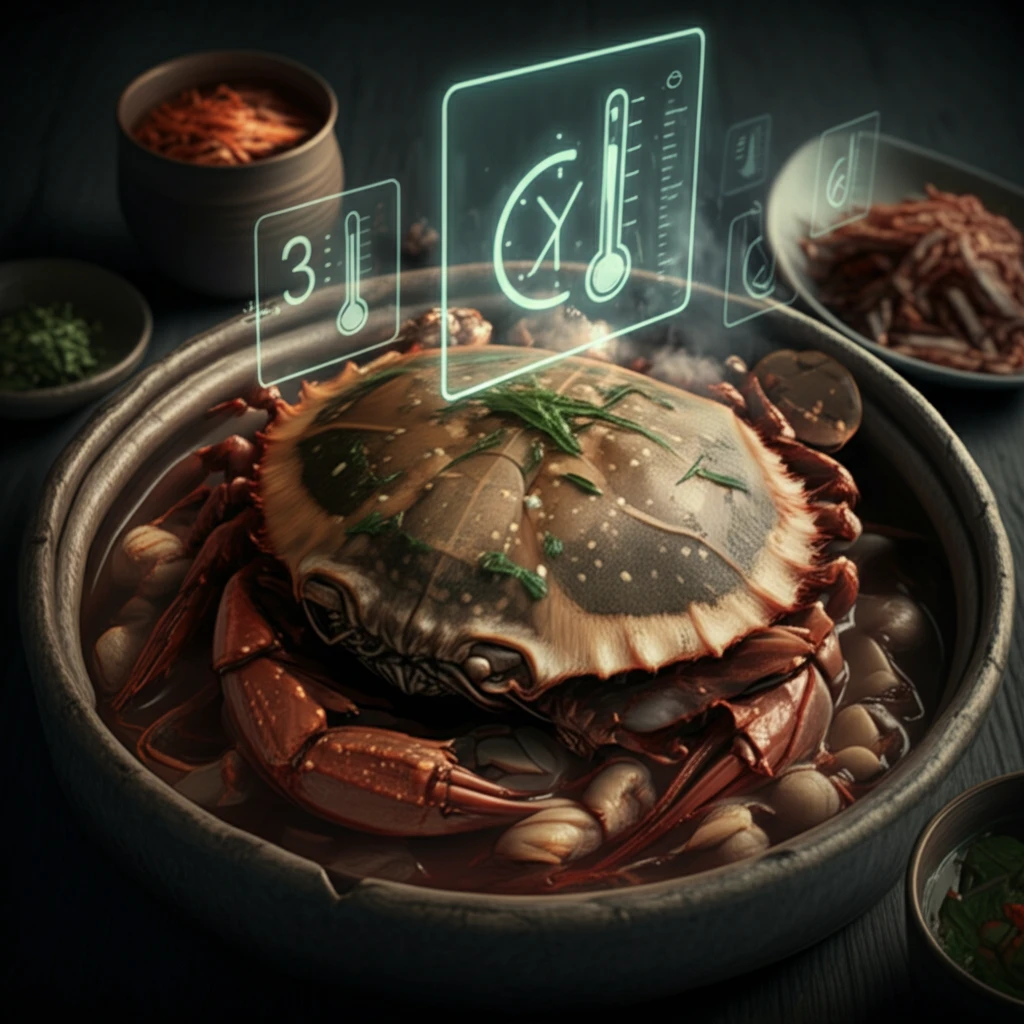
Is Your Ganjang-Gejang Safe? A New Guide to Preventing Foodborne Illness
"Time-Temperature Criteria Model for Vibrio parahaemolyticus in Korean Raw Crab Dish"
Ganjang-gejang, a marinated raw crab dish, is a beloved part of Korean cuisine, celebrated for its unique and savory flavor. This ready-to-eat seafood is made by marinating raw crab in soy sauce and other seasonings, creating a culinary experience unlike any other.
However, enjoying this delicacy comes with potential risks. Raw seafood can harbor pathogenic microorganisms, such as Vibrio parahaemolyticus, which can lead to foodborne illnesses. Ensuring the safety of ganjang-gejang requires a careful understanding of how these bacteria grow and how to control their proliferation.
Recent research has introduced a novel approach to tackling this issue: a time-temperature criteria (TTC) model designed to predict and prevent the growth of Vibrio parahaemolyticus in ganjang-gejang. This model offers practical guidelines for safe storage and consumption, helping to minimize the risk of foodborne illnesses.
Understanding Vibrio parahaemolyticus and its Risks

Vibrio parahaemolyticus is a common bacterium found in marine environments. It thrives in seafood and can cause gastrointestinal issues if consumed in large quantities. In South Korea, it is a significant cause of seafood-borne illnesses, making it essential to manage its presence in popular dishes like ganjang-gejang.
- What is the TTC Model? The Time-Temperature Criteria (TTC) model is a predictive tool that helps determine safe storage periods for food based on temperature. It forecasts how bacteria like Vibrio parahaemolyticus will grow under different temperature conditions.
- How Does it Work? By analyzing the growth kinetics of Vibrio parahaemolyticus at various temperatures, researchers can establish guidelines that prevent the bacteria from reaching dangerous levels. This model helps estimate the Log Growth Ratio (LGR), indicating how much the bacterial population increases over time.
- Key Findings: The study found that Vibrio parahaemolyticus can increase by 1 LGR (Log Growth Ratio) in ganjang-gejang after 10.8 hours at 16°C, 5.2 hours at 22°C, and 4.7 hours at 28°C. These findings underscore the importance of maintaining proper refrigeration and storage practices.
Practical Steps for Safe Enjoyment
By following the guidelines provided by the TTC model, consumers and food vendors can significantly reduce the risk of foodborne illnesses associated with ganjang-gejang. Proper refrigeration, timely consumption, and awareness of storage temperatures are key to enjoying this traditional dish safely. This research serves as a valuable resource for promoting food safety and preserving the culinary heritage of Korea.
